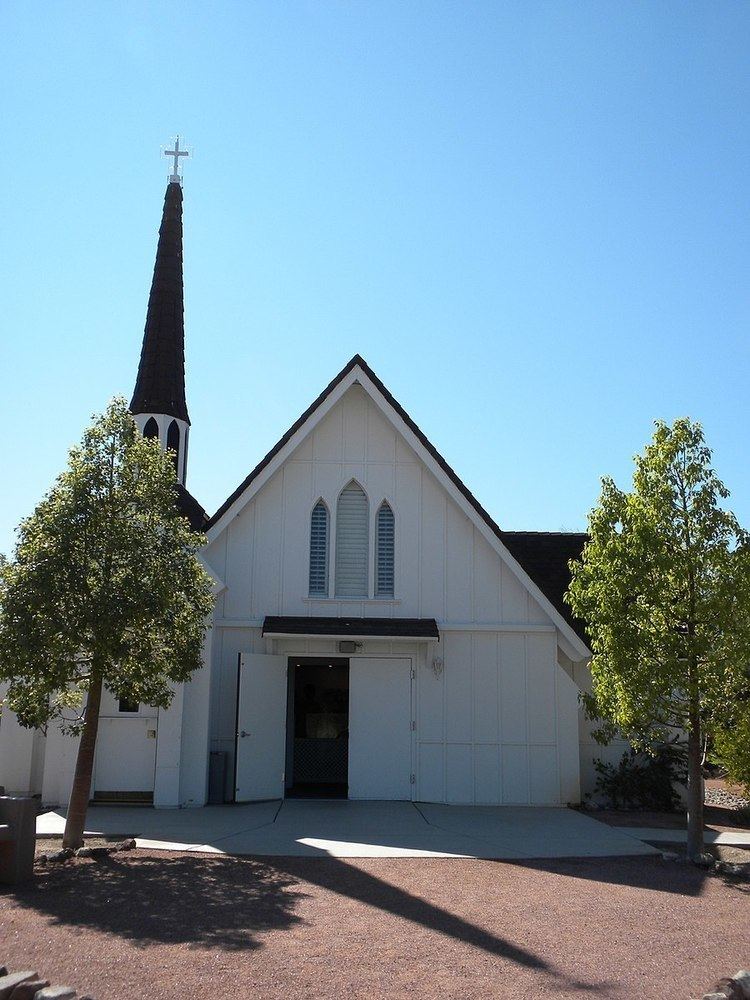Phone +1 702-455-7955 | ||
 | ||
Hours Open today · 9AM–4:30PMMonday9AM–4:30PMTuesday9AM–4:30PMWednesday9AM–4:30PMThursday9AM–4:30PMFriday9AM–4:30PMSaturday9AM–4:30PMSunday9AM–4:30PM Similar Henderson Bird Viewing, Emerald Island Casino, Jokers Wild Casino, Lion Habitat Ranch Inc, Cowabunga Bay Las Vegas Profiles | ||
Clark county museum and historic las vegas buildings part 1
Clark County Museum is located in Henderson, Nevada and is owned and operated by Clark County. The museum includes the Anna Roberts Parks Exhibit Hall and Heritage Street which contains eight historic buildings from the county.
Contents
- Clark county museum and historic las vegas buildings part 1
- Clark county museum lobby exhibits
- History
- Gaming
- Historic houses
- Transportation
- References
The museum focuses on the history of the southernmost county in Nevada with emphasis on the early Native American inhabitants such as the Paiute people, as well as mining, the impact of the railroads, and gaming. Exhibits include several historic houses as well as a recreated ghost town.
Clark county museum lobby exhibits
History
Anna Nuhfer Roberts came to Nevada in 1911 with her husband, William Roberts. He was the first mortician in Las Vegas, and together they travelled southern Nevada in conjunction with his business. Anna became a collector of historical artifacts, minerals and clothing. Her marriage to the much older William Parks ended in the mid-1920s. William removed to California, but the younger Anna Roberts remained in Nevada with her daughter, Edith Jennings Mariano, born 1920, and her widowed mother. Having completed undertaker training and being licensed in both Nevada and California, Anna continued her first husband's occupation and continued her travels throughout southern Nevada, while continuing to add to her collections. She opened Palm Mortuary in Las Vegas in May 1926 and married Gene Parks about the same time, becoming known as Anna Roberts Parks. She initially stored her burgeoning collection inside her home, or scattered about her five-acre property. As her collection outgrew her own property, much of it was moved to an army building near 21st and Fremont Streets. This location proved less satisfactory since people broke in and stole valuable and historic artifacts.
Anna Roberts Parks died in a car crash in 1962, leaving her collections and property to her only daughter, Edith Jennings Mariano. The daughter, Edith, continued seeking a local sponsor who was willing to create a proper museum and one that allowed her to honor her mother's wishes and keep the collection in Southern Nevada where it belonged. Following another break-in at the warehouse near 21st and Fremont Street, a local Nevada historian, Maryellen Vallier Sadovich contacted Edith and bolstered the search for a sponsor. Maryellen brought the collection to the attention of Dick Pryor, a member of the Henderson Chamber of Commerce. The Henderson Chamber of Commerce was interested, but like other potential sponsors, they expressed their uncertainty over where they could house the collection and how they could raise sufficient money to build a proper museum building. In response to Maryellen's letter dated 11 Jun 1966, the Chamber announced the creation of a permanent committee to study the problem. The initial three committee members were Frank Schreck, Glen Taylor, and Dick Pryor. By January, 1968, the Chamber of Commerce had voted to go ahead with the plans for a museum building, but they had been told previously that the Henderson School facilities were not an option. About that same time, Maryellen Sadovich called to report that the collections had been vandalized yet again from their storage location, primarily in the army barracks building at 21st and Fremont Street. This prompted a call to the Glen Taylor, a member of the school board. Within an hour, Glen had secured the Townsite school's gymnasium on Water Street for the project. Months of cautious obstructions and objections about using school property for the museum were abruptly replaced a sense of urgency to protect & preserve the collections by moving it to Henderson where it could be organized and safe from further theft or vandalism.
In light of these new developments, Dick Pryor, Maryellen Sadovich, Glen Taylor, and Ellen Shirley-Frehner immediately drove to Las Vegas to supervise moving the collection from the army barracks to the school gymnasium in Henderson. By January 11, 1968, the move was complete and the collection was secured in the school gymnasium, awaiting a good cleaning, organization, and preparation for display.
The new museum became a community project for the close-knit community of Henderson. To properly structure the new museum, By-Laws were drawn up by District Judge, Jim Santini. Bill Boyd drew up a contract that legally transferred the collections from Mrs. Jennings to the Chamber of Commerce. The new museum became a legal entity on 19 March 1968. The name was later changed to the Southern Nevada Museum.
The museum's name was changed to Clark County Museum or Clark County Heritage Museum.
The administrator of the Clark County Heritage Museum is Mark Hall-Patton, a 20th-century historian who has been featured on the reality television series Pawn Stars as a recurring expert, more so than any other expert.
Gaming
Historic houses
The Candlelight Wedding Chapel, previously located on the strip, is now housed on the Museum grounds, at the end of Heritage Street. A historic railroad cottage from downtown Las Vegas has also been relocated to the Museum grounds, but is not yet open to the public. One can look inside at period furnishings from the porch.
